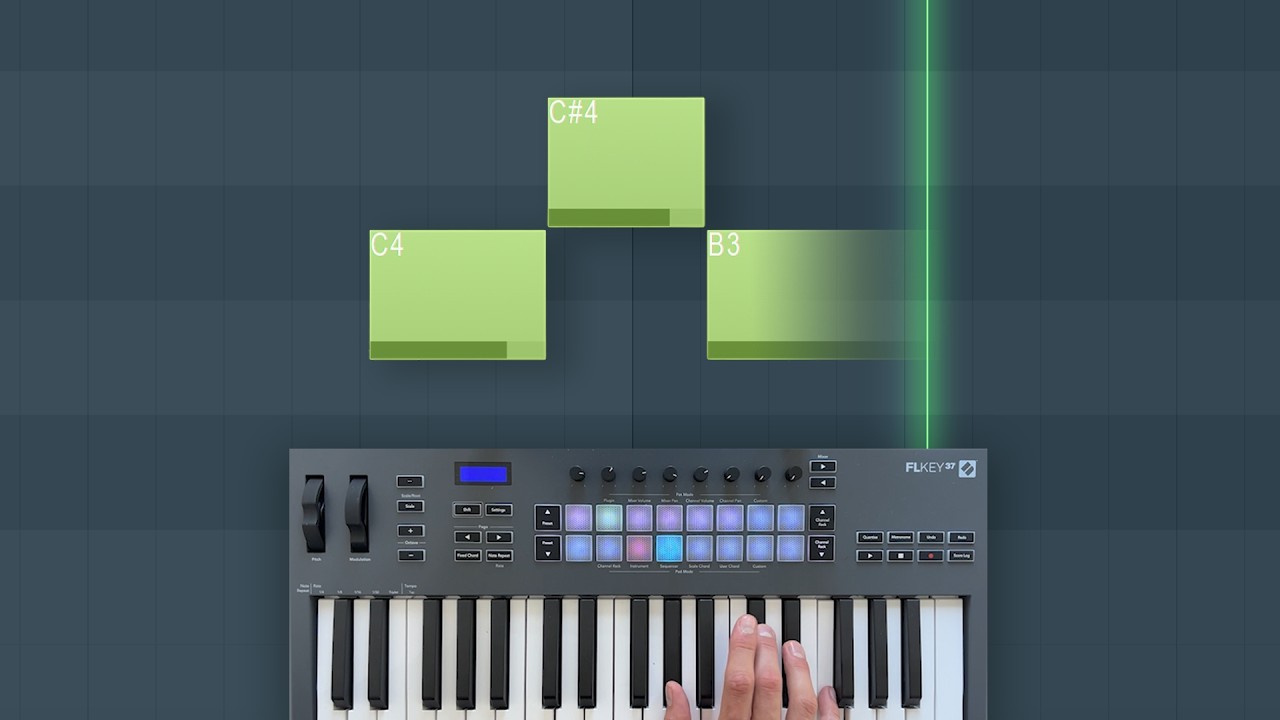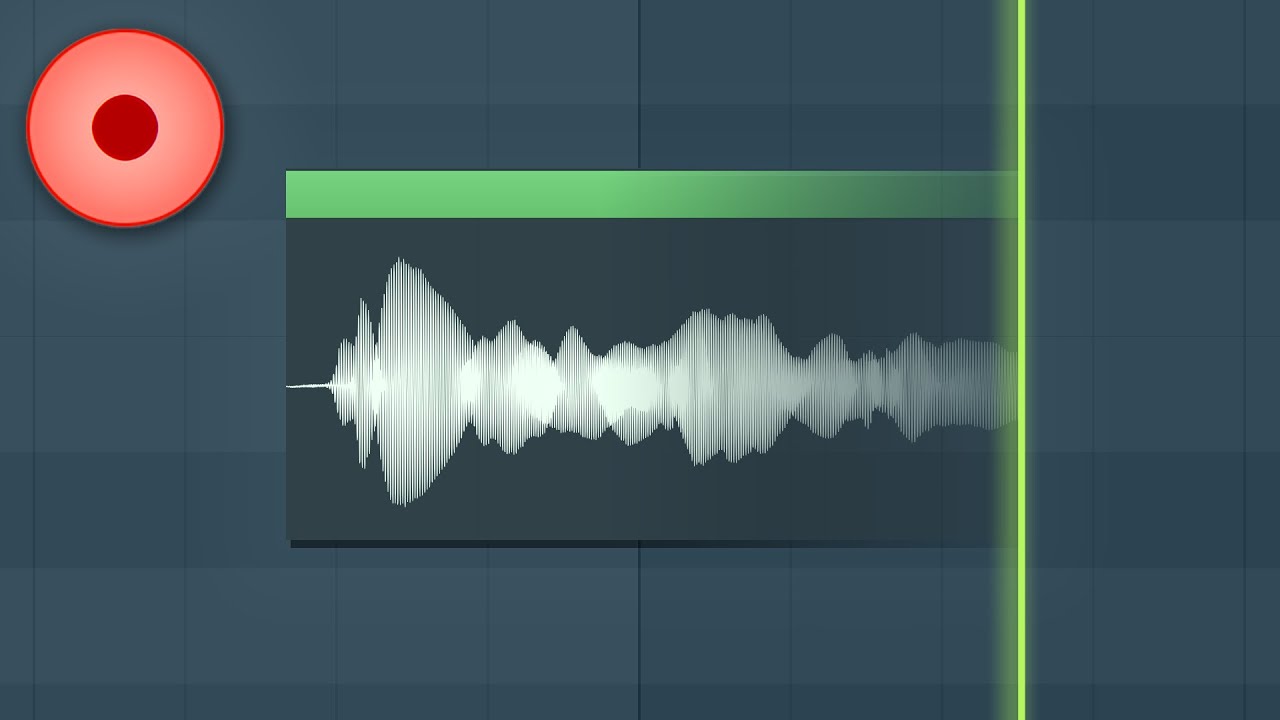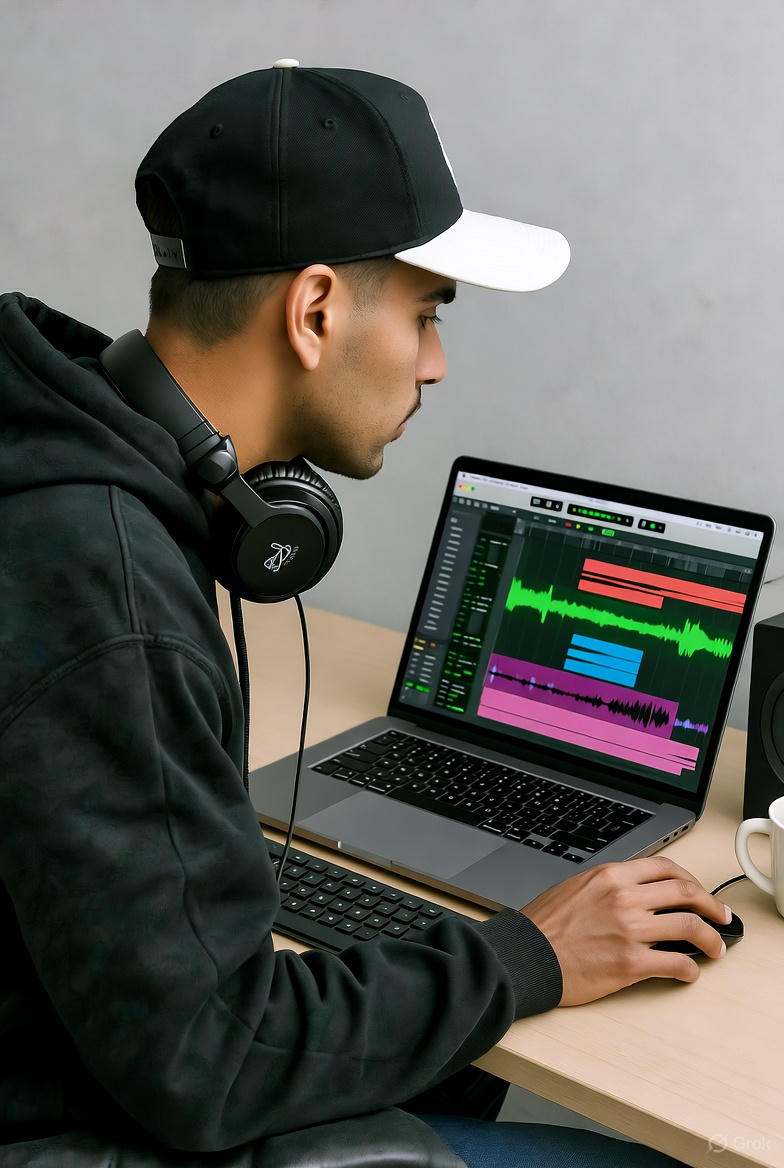!Let Us HELP YOU!
We have a lot of curated content on this blog.
Take this simple 20 second Quiz to Help You
Find The Exact Content You Are Looking For!
The Producer School presents a detailed guide on how to Make Beats Like Malugi, inspired by the Berlin DJ and producer known for injecting joy and colour into modern dance floors.This article was curated with the help of this video How To Make Music Like Malugi make sure to check out their channel on YouTube. This article expands on The Producer School’s tutorial and walks readers through the sonic building blocks, arrangement instincts, and mixing tricks that define the Malugi-adjacent sound. It is written from a third person perspective, preserving the original tutorial’s upbeat, instructional tone while offering additional context and actionable tips for producers who want to Make Beats Like Malugi.
Table of Contents
- Outline
- Introduction — What It Means to Make Beats Like Malugi
- Core Musical Ingredients
- Sound Design: Building the Malugi Palette
- Creating Impact: Old-School Textures and Repurposed Samples
- Drum Programming: From Groove to High Energy
- Arrangement: Building Tension and Release
- Mixing and Processing: Keep It Clean, Keep It Pumping
- Final Touches and Export
- Workflow and Resources: Using the Ignite Pack and More
- Practical Session: A Recap of the Producer School Build
- Promotion and Next Steps for Producers
- Common Pitfalls and How to Avoid Them
- Examples of Creative Variations
- FAQ — Frequently Asked Questions on How to Make Beats Like Malugi
- Closing Notes and Encouragement
Outline
- Introduction: what defines the Malugi sound
- Core musical ingredients: tempo, keys and mood
- Sound design: piano, bass, organ, rave lead, top synths and strings
- Creating impact: old-school textures and pitch-repurposed samples
- Drum programming: kicks, claps, breaks and layering
- Arrangement: build-ups, pre-drops and release
- Mixing and processing tips: EQ, sidechain and space
- Workflow and creative resources: Ignite pack and presets
- Promotion and next steps for producers
- FAQ
Introduction — What It Means to Make Beats Like Malugi
To Make Beats Like Malugi is to craft tracks that feel like an invitation to dance with a grin on your face. The Producer School describes Malugi as “the happiest man in dance music,” and that joyful signature is central to the style. The sound sits at the intersection of UK house, trance, and contemporary dance-pop trends, producing a lively, bright and sometimes nostalgic palette that still hits hard on modern sound systems.
When a producer sets out to Make Beats Like Malugi, they are prioritising energy, colourful timbres, and a playful rhythmic bounce. This is not about deep, brooding club grooves — it’s about ecstatic, uplifting tracks that are equal parts rave nostalgia and current hard-house/trendoid sensibility.
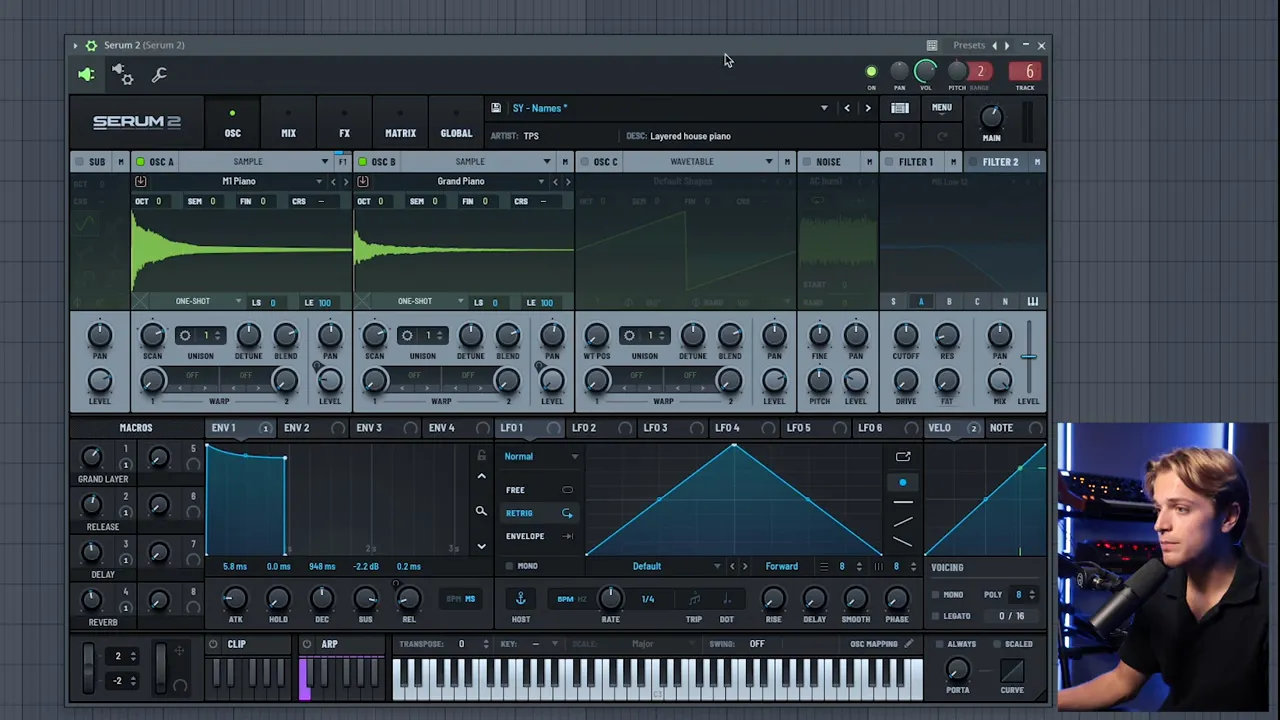
Core Musical Ingredients
Tempo and Energy
One of the easiest ways to Make Beats Like Malugi is to choose the right tempo. The Producer School recommends setting the project at 145 BPM to capture the genre’s momentum and kinetic feel. That relatively fast BPM sits above classic house and below hardcore tempos, giving tracks a sprightly urgency while still allowing swung and off-beat elements to breathe.
145 BPM contributes directly to how listeners perceive tension and release: it allows short piano stabs, octave-jumping bass lines, and off-beat organ hits to interact in a way that produces forward motion. If a producer wants to Make Beats Like Malugi, they should start at this tempo and only deviate if they have a strong creative reason.
Major Keys and the Mood of Positivity
Malugi-style productions favour major key progressions or modal choices that skew toward uplifting emotions. The signature is not a complicated harmonic journey but instead a combination of simple, bright chord progressions and rhythmic placement that makes a chord sequence feel euphoric.
To Make Beats Like Malugi, use major triads or bright extensions like add9 or sus2 voicings, especially on a sampled M1-style piano. The piano often leads the emotional arc, so keep voicings clear and place energy in the mid-high range of the piano to let it cut through without competing with bass.
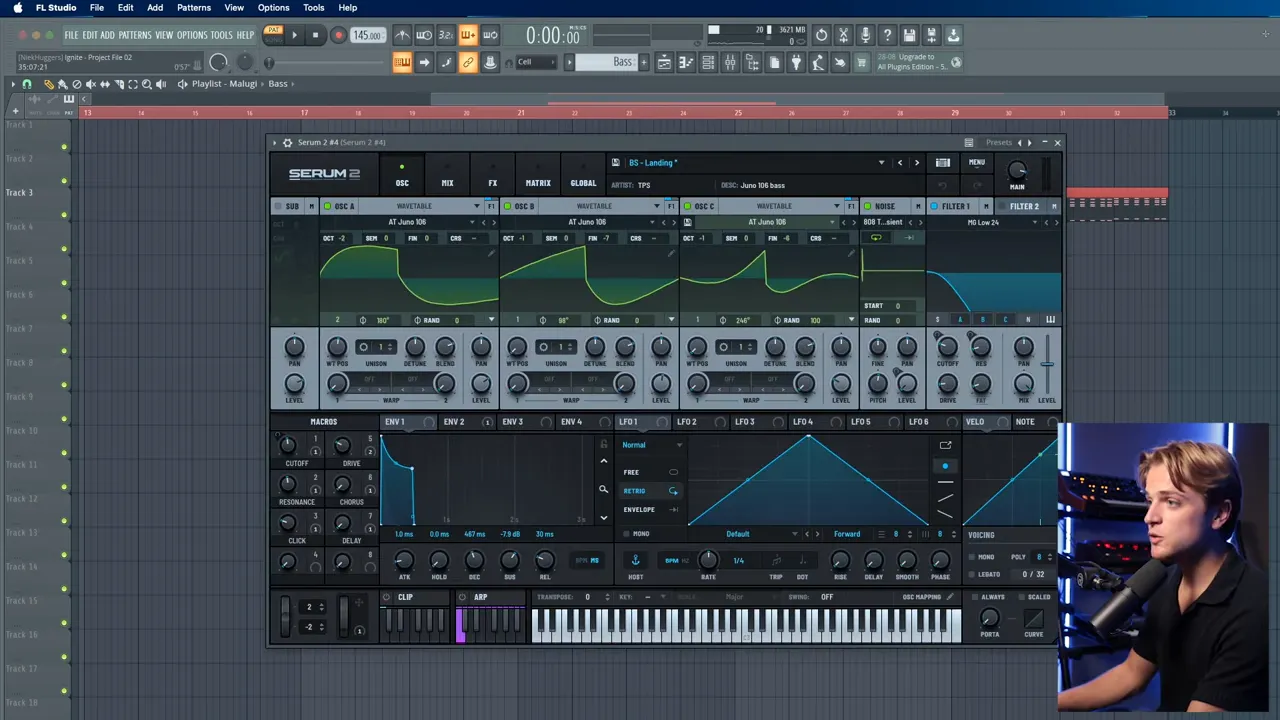
Sound Design: Building the Malugi Palette
Sound selection and processing make or break the attempt to Make Beats Like Malugi. The Producer School’s tutorial highlights several core elements: a bright sampled piano, a fat octave-jumping bass, an M1-style organ on the off-beat, a vibrato-heavy rave lead, subtle top synths, and long, sustaining strings. Below are step-by-step approaches for each element and how they interact in the mix.
Piano: The Emotional Anchor
The piano is the first thing introduced when trying to Make Beats Like Malugi. A sampled M1-style piano preset is ideal because it’s bright, housey and slightly lo-fi in the right places. The objective is not to write a technically complex progression but to establish a rhythmic, repeating chord that provides emotional focus.
Practical guide to the piano:
- Choose a bright sampled piano (M1-style or similar).
- Start in the lower-mid octaves to give the chords weight and allow the bass to sit below.
- Focus on rhythm first. At 145 BPM, work with eighth-note or dotted eighth placements to create drive.
- Apply a gentle high-end boost for crispness and a low-cut around 100–120 Hz to leave room for the bass.
- Add multiband compression sparingly to glue dynamics while preserving transient energy.
When the piano is arranged correctly, it sets the track’s mood. To Make Beats Like Malugi, keep the piano pattern repetitive but emotionally charged. Use occasional inversions or added notes for interest, but avoid dense voicings that overcrowd the mix.
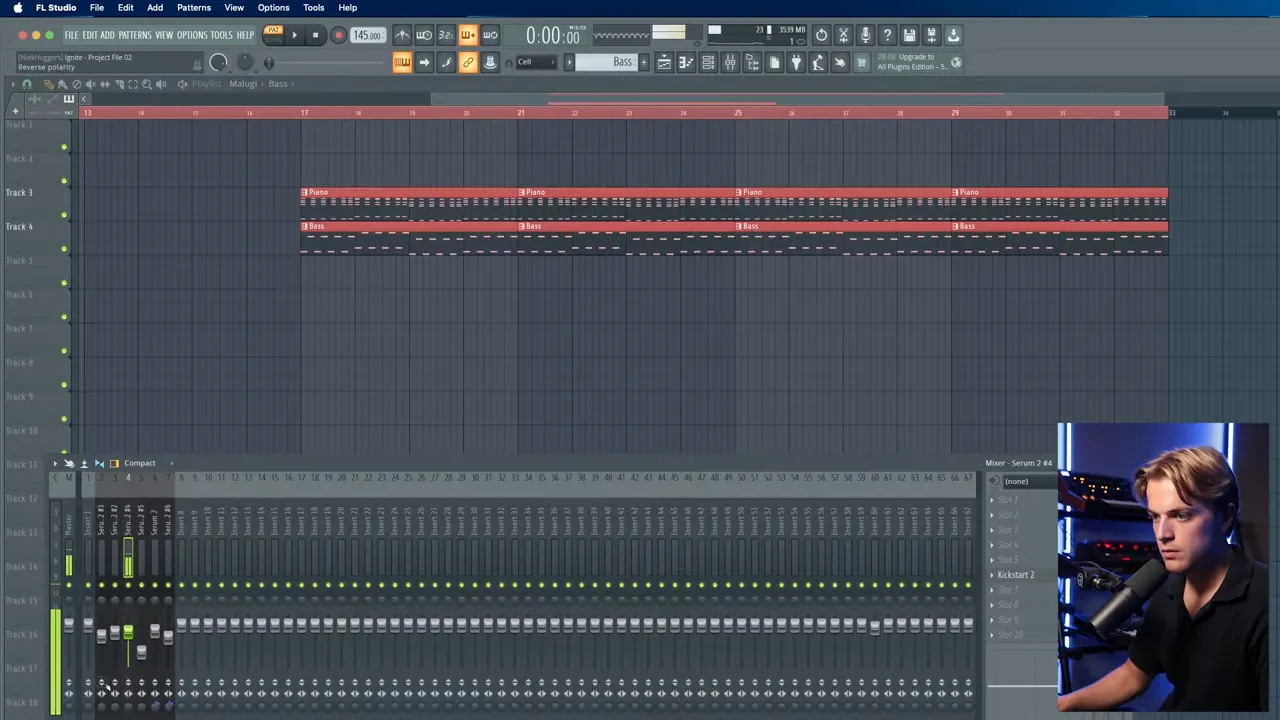
Bass: Octave Jumps and Groove
In this style, the bass is deliberately simple in composition but powerful in character. The Producer School replicates an old-school UNO bass patch (recreated in Serum 2) called “Bass Landing.” The sound is designed to jump between octaves and lock in with the piano rhythm.
Tips to Make Beats Like Malugi with bass:
WEBSITE RESOURCES FOR MUSICIANS
- Design the patch with multiple wavetables for thickness. Use FM-like harmonics or saw/pulse blends for presence.
- Use a low-pass filter (MG low 24 or similar) with an envelope to shape the attack and body.
- Add asymmetric distortion and mild saturation to fatten the mid harmonics.
- Write an octave-jumping pattern: use a steady 1/8th rhythm but alternate between low and high octaves.
- Sidechain the bass aggressively to the kick to avoid clashes, especially as the kick in this genre tends to be long and pumping.
The effect of octave-jumping basslines at 145 BPM is both nostalgic and dancefloor-effective. Producers who want to Make Beats Like Malugi should prioritise a punchy low end and clear mid harmonics so the bass is felt as much as heard.
Off-Beat Organ and Old-School Groove
An off-beat organ (an M1-style organ sample) is a defining timbral layer in the Malugi sound. It hits between the kick’s main pulses and provides that pumping “rave” feel when combined with the bass and piano.
How to program the organ:
- Copy the bass rhythm but shift it to land on the off-beats — the spaces between the kick hits.
- Apply a substantial low-cut so the organ does not clash with bass frequencies. Boost slightly in the high-mid to make the organ sit forward.
- Keep the organ tonal content simpler than the piano; it functions more as rhythmic glue than as harmonic complexity.
- Use minimal sidechain on the organ — placement often reduces the need for heavy sidechaining.
Layering the organ with octave bass and piano is central to the process to Make Beats Like Malugi. The organ creates the characteristic off-beat drive and allows the track to maintain momentum without relying only on percussion.
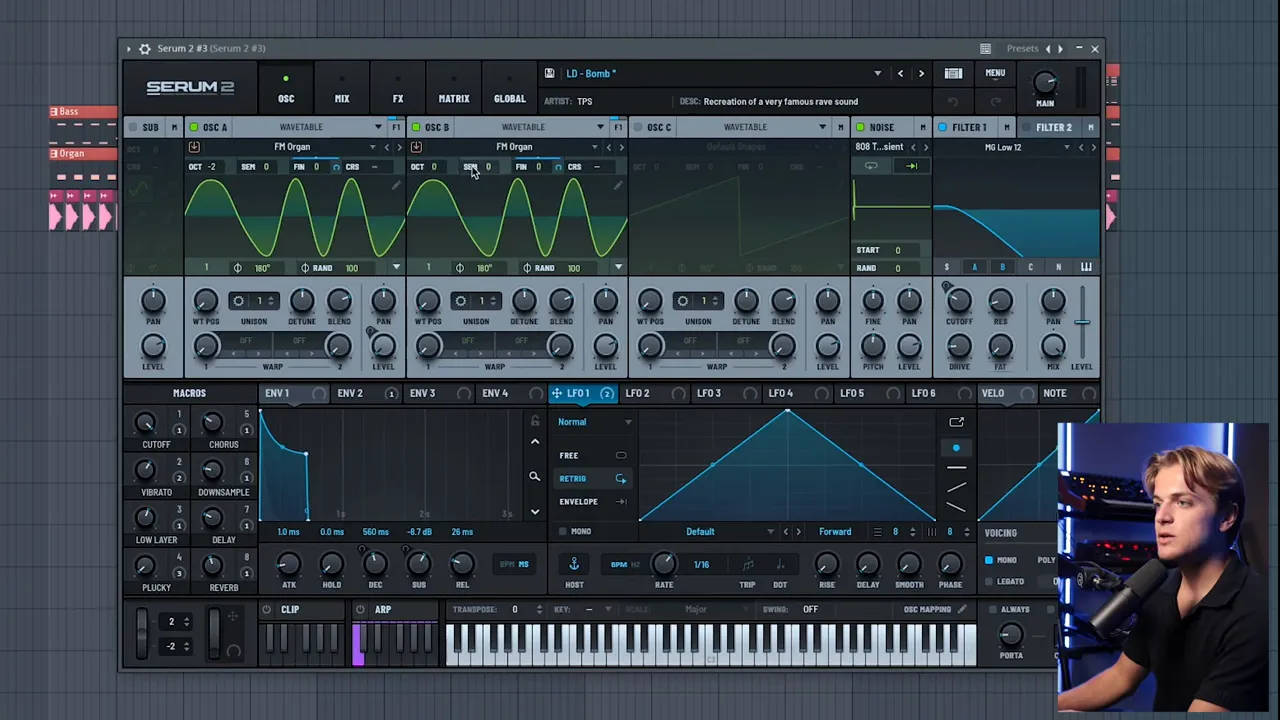
Signature Rave Lead: Vibrato, LFO and FM Character
One of the most recognisable sounds in the style is a vintage rave lead with pitch vibrato. The Producer School recreates this by using FM-like organ wavetables and a fine-tune LFO that modulates pitch slightly to create vibrato.
Steps to craft the lead and how to Make Beats Like Malugi with it:
- Choose FM-rich wavetables (two FM organ tables are a good starting point).
- Assign a slow LFO to the fine tune control to create a natural vibrato. The vibrato is essential; without it the patch sounds lifeless.
- Add chorus (vintage style), light bit-crush for grit and tape-style saturation for texture.
- Use delay (ping-pong) and reverb to place the lead in the stereo field — don’t overdo reverb on the lead’s core so it retains attack.
- EQ with a low cut and slight high-mid boost so the lead sits above the organ and piano.
Because this lead is often rhythmically aligned with the organ, producers who want to Make Beats Like Malugi should think of it as a rhythmic instrument rather than only a melodic one. It punctuates the groove and adds nostalgic colour.
Top Synths and Subtle Tension Layers
Small, sustained top synths and strings provide tension and air. These should be gentle; their purpose is to fill the upper harmonic space and work as emotional glue during builds and drops.
How to implement:
- Use a simple pad or single-note top synth that sustains one or two notes to add shimmer.
- Roll off excessive highs so the pad does not interfere with lead clarity.
- Add a long-sustain string (a “Synth Orchestra” preset or similar) to create tension during the break.
- Apply sidechain lightly on long sustainers to let the kick breathe and to avoid masking.
A producer trying to Make Beats Like Malugi should use these elements sparingly — the most effective tracks have breathing room for the main rhythmic elements to shine.
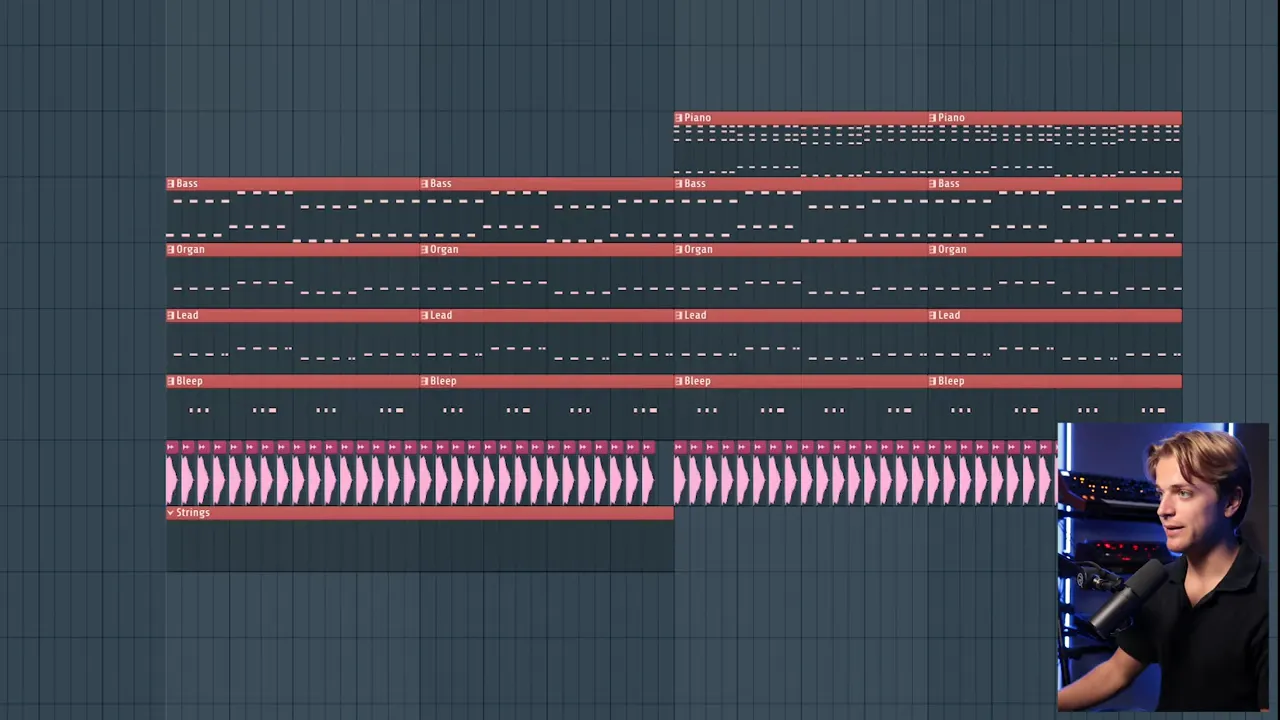
Creating Impact: Old-School Textures and Repurposed Samples
To Make Beats Like Malugi, it helps to incorporate old-school elements and repitched samples that carry full-spectrum energy. The Producer School repurposes melodic samples and repitches them down several octaves to create massive, textured impacts under drops.
Practical steps for sample repitching and treatment:
- Find a bright melodic sample or loop that covers a wide spectrum.
- Identify the key (for example, C in the demonstration) and repitch the loop to match the track’s key.
- Pitch it down multiple octaves (three octaves down is a common trick) to produce a sub/impact texture.
- Process with distortion, EQ (low cut and mid boosts), vintage chorus, stereo enhancement, and ping-pong delay to give it width and space.
These repitched textures act as sub-ambience and can help Make Beats Like Malugi sound massive during the drop without adding harsh top-end elements. They fill the gaps and contribute to the track’s low-mid “oomph.”
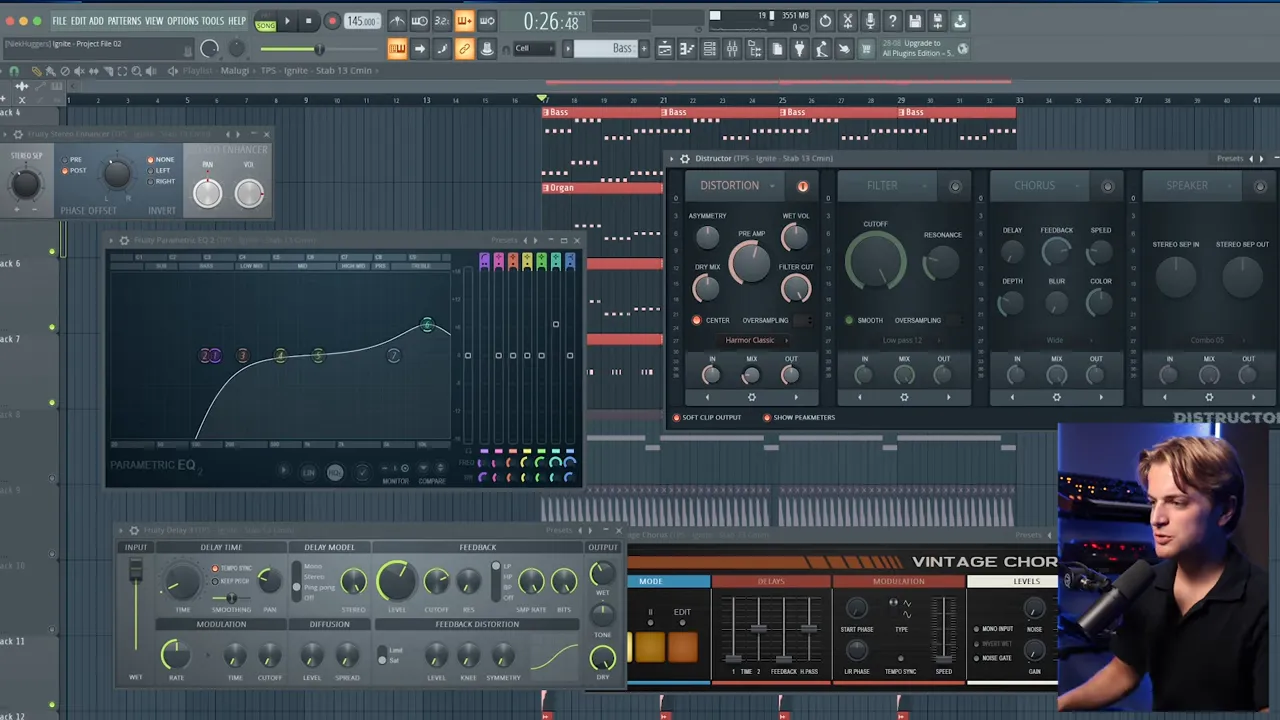
Drum Programming: From Groove to High Energy
Drums are the engine. To Make Beats Like Malugi, creators layer percussive elements strategically to create a nostalgic, pumping rhythm that still hits modern club systems.
Kicks and Pumping Groove
The kick in this style tends to be long and pumping — it carries a lot of the track’s forward motion. A reverse kick just before the drop is employed to “suck” the listener into the hit and is one of the most reliable tricks to Make Beats Like Malugi instantly audible in a DJ mix.
Production tips:
- Use a long, punchy kick sample with a pronounced transient for the club impact.
- Apply hard sidechain to bass and long sustainers to get that pumping house groove.
- Add a reverse kick or build riser leading into the downbeat to increase anticipation.
Claps, Hats, and Old-School Breaks
Layering is key: two clap layers (one thinner, one fuller) can create a sharp yet warm snare feel. Hats and top percussion loops provide drive, while vintage breakbeats add texture and rhythmic complexity.
How to arrange these to Make Beats Like Malugi:
- Use an open hi-hat loop or noisy open hi-hat for energy.
- Layer claps and align them with kicks to keep the groove punchy.
- Introduce an old-school breakbeat or loop to fill the stereo field and add movement on top of the primary groove.
- Use top loops and percussion loops to accent transitions and keep variety across sections.
Transition Tools
Impact samples, crash fills and snare rolls help bridge from intro to break, and from build to drop. This style uses vinyl noise, snare rolls, and backspin/gated downfillers to create a sense of release that is crucial to Make Beats Like Malugi effectively.
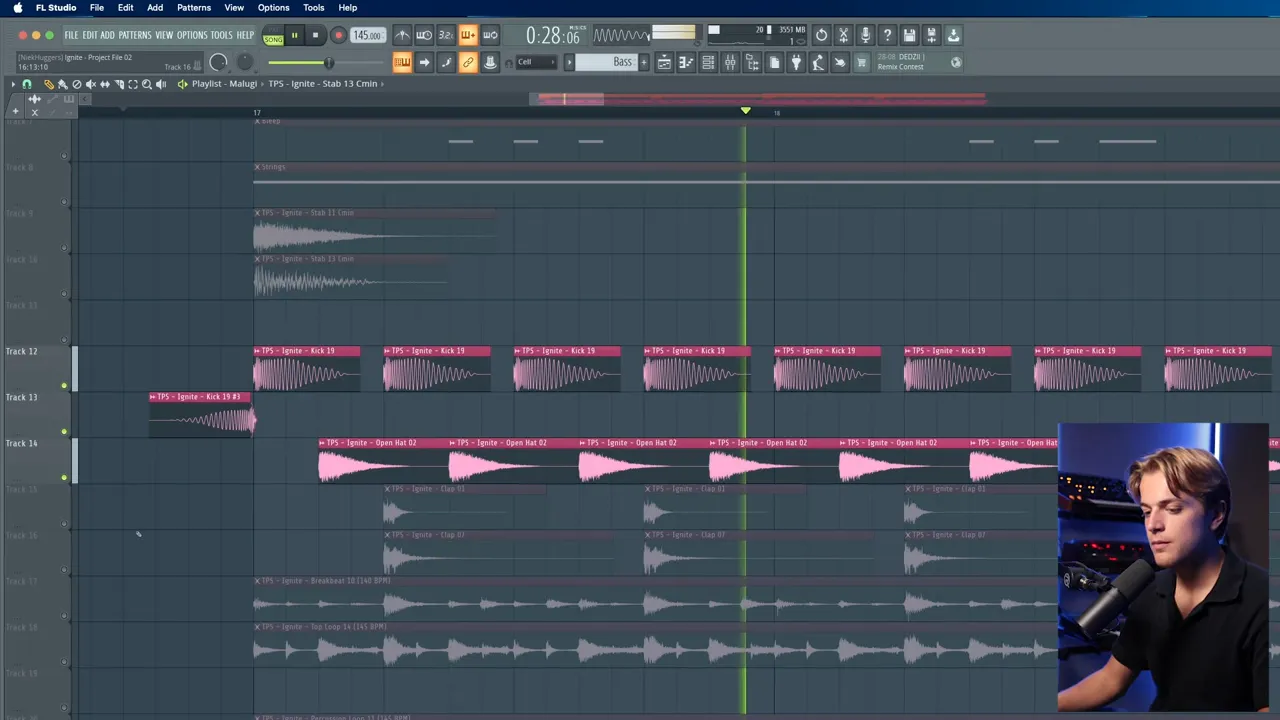
Arrangement: Building Tension and Release
A typical arrangement to Make Beats Like Malugi follows a simple but effective blueprint: a long introductory groove, a break/build with tension elements, and a punchy drop. The Producer School demonstrates a layout: extensive intro to set mood → break with vocal and strings for emotion → gated downfills and backspins → drop with full drum and synth energy.
Intro: Mood, Not Everything
In the intro, producers should reveal enough to hook listeners without giving away the full progression. Introduce the piano and a portion of the chord movement, keep some parts sparse, and emphasise rhythmic elements that hint at what’s to come.
Break and Build: Vocal Chops and Tension
Vocal phrases like “Don’t turn the lights on” are used in the demonstration as ecstatic punctuation. Looping piano notes and repeating vocal snippets add tension. Add long snare rolls, swelling strings, vinyl noise and impacts to build anticipation and keep the listener engaged up to the pre-drop release moment.
To Make Beats Like Malugi, loop the first piano note during the pre-drop to increase tension. Automate low-cut and high-cut filters and delay sends on the vocal to gradually thin the texture and create space for the impact.
Pre-Drop and Release
Use backspin effects, gated downfillers, and pitch-filtered risers to release energy. A spoken-word pre-drop vocal adds character and helps focus attention on the rhythmic reset when the drop hits. The drop should be a sudden, high-energy return to the main groove with full drum, bass, organ and lead presence.
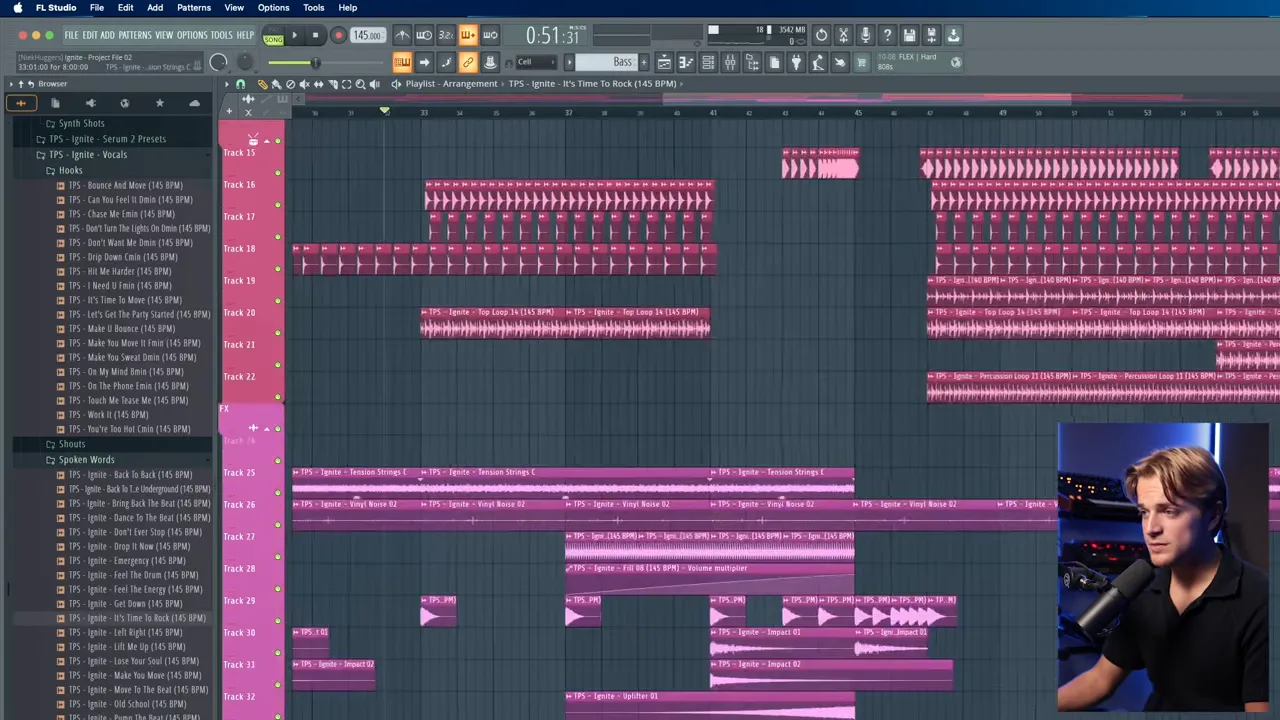
Mixing and Processing: Keep It Clean, Keep It Pumping
Mixing is where the track’s clarity and club-readiness are determined. Malugi-style tracks are bold, so mixing emphasis should be on separation, dynamic control and purposeful stereo width. Below are practical mixing strategies to Make Beats Like Malugi sound professional and powerful.
EQ and Frequency Slotting
Every instrument must have space. Use low cuts aggressively on non-bass elements (piano, organ, leads) to free up the sub and low-mid region for the bass and kick. Midrange management is key: the piano and lead should occupy the 1–5 kHz band while the organ sits in the 500 Hz–2 kHz area with lows rolled off.
- Low cut piano at ~100–120 Hz to avoid bass masking.
- Organ low cut to remove sub frequencies — leave presence in upper mids.
- Lead low cut with a 3–6 kHz boost for presence and bite.
Sidechain and Pumping Rhythm
Sidechain compression is fundamental. The bass and long-sustain pads should be sidechained to the kick to achieve the rhythmic pumping sensation central to the genre. Sidechain settings tend to be more aggressive than in subtle house subgenres — this is purposeful to Make Beats Like Malugi.
Saturation, Distortion and Character
Saturation and asymmetric distortion add harmonic richness and perceived loudness without only increasing peak volume. Use light distortion on bass and repitched textures, and tasteful saturation on drums to glue layers together. Down-sampling and bit-crushing on the rave lead can create that old-school degradation that evokes rave-era sonics.
Stereo Image and Delay Effects
Use ping-pong delay on melodic repeating elements to create movement. Stereo wideners can add presence to repitched samples and top synths, but keep core elements like the kick and bass centred. Delay/doubling on the lead and organ can simulate crowd-filling width suitable for club playback.
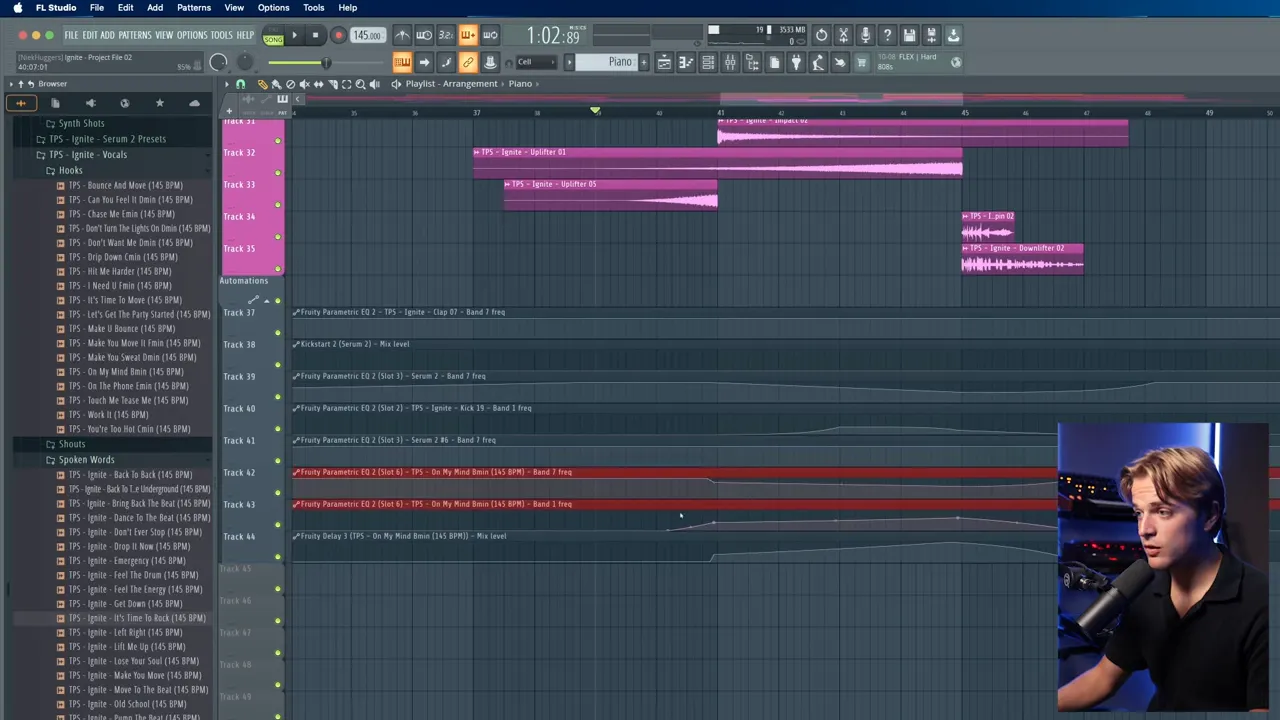
Final Touches and Export
Before exporting, check the arrangement for repetition fatigue. Add small variations: alternate organ hits, drop secondary percussion layers later in the arrangement, and automate filter sweeps on lead elements for interest.
Export tips to Make Beats Like Malugi ready for DJ sets:
- Bounce stems and a stereo master. Keep the master headroom (~-6 dB) before mastering.
- Check translation on multiple systems: club monitors, headphones and small speakers.
- Consider stem mastering or a mastering chain that preserves dynamics while increasing perceived loudness.
Workflow and Resources: Using the Ignite Pack and More
Producers aiming to Make Beats Like Malugi can accelerate the process by using curated sample packs and presets. The Producer School’s Ignite sample pack contains piano presets, M1 organ samples, rave lead presets recreated in Serum, bass patches, loops and percussive elements used in the demonstration.
Where to find these resources (plain URLs for convenience):
Ignite pack: https://theproducerschool.com/products/ignite
The Producer School Instagram: https://www.instagram.com/theproducerschool/
The Producer School YouTube channel: https://www.youtube.com/channel/UCqPdU0C6sIx_kkEoAcW9hSQ
Additional reading and relevant articles to help Make Beats Like Malugi and progress as a producer:
Curated videos & articles: https://howtomakebeatsblog.com/
Ramzoid 808 Cooker Plugin review: https://howtomakebeatsblog.com/ramzoid-808-cooker-plugin-review/
How Cymatics made $364,000: https://howtomakebeatsblog.com/how-cymatic-made-364000-last-month-being-full-time-producers/
Trippie Redd vocal effect tutorial: https://howtomakebeatsblog.com/trippie-redd-vocal-effect-tutorial/
Practical Session: A Recap of the Producer School Build
To make the process concrete, The Producer School demonstrates building a track from a piano progression through to a finished arrangement. The session follows a clear sequence that any producer can replicate to Make Beats Like Malugi:
- Pick tempo: 145 BPM.
- Choose a bright M1-style piano preset and write a major-key chord progression focusing on rhythm and repetition.
- Create a fat octave-jumping bass patch and write a tight 1/8th rhythm that alternates octaves to follow the piano.
- Program an off-beat organ to fill the rhythmic gaps and give the track its pumping quality.
- Design a vibrato-heavy rave lead using FM-style wavetables and an LFO on fine-tune for pitch wobble.
- Add high-layer synths and long sustaining strings for tension; keep sidechain light on these elements.
- Repitch full-spectrum samples down multiple octaves and process them with distortion, chorus and delay for drop weight.
- Build the drum kit: long pumping kick, reverse kick for transitions, open hi-hat, two claps and a breakbeat top loop.
- Arrange: long intro → break with vocal + strings → gated pre-drop → drop.
- Mix with aggressive sidechain, careful EQ slotting and tasteful saturation.
- Export stems and master for club playback.
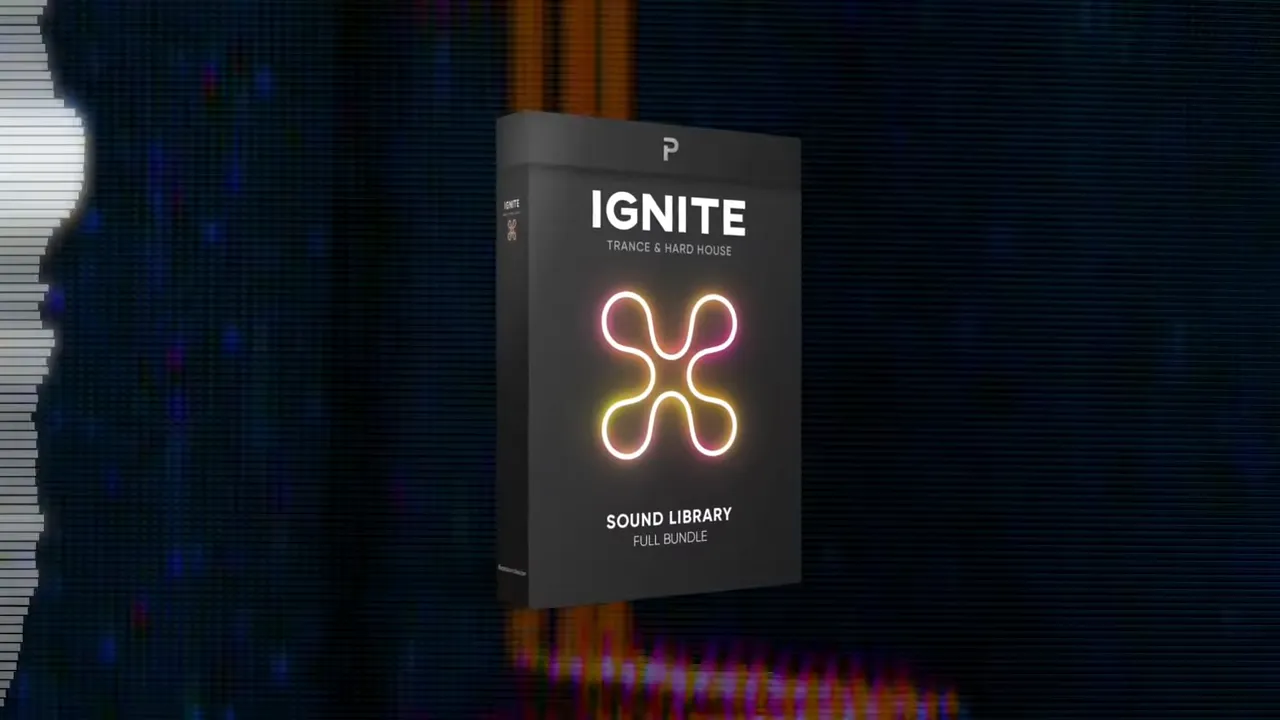
Promotion and Next Steps for Producers
After finishing a track that aims to Make Beats Like Malugi, promotion strategy matters. The Producer School’s approach highlights visibility through curated packs and social channels. Producers should:
- Prepare stems and DJ-friendly previews for DJs and playlists.
- Use visually consistent artwork and short video clips for Instagram and TikTok to showcase the track’s drop.
- Pitch to DJs and playlists who specialise in hard-house, modern rave and trend-driven dance music.
- Consider partnering with labels and events akin to Club Heartbroken for targeted exposure.
Momentum often comes from performance and social presence — Malugi grew from local favourite to global name thanks to memorable live sets and viral moments. Producers who want to Make Beats Like Malugi should think beyond sound design and focus on how the track will land in a DJ mix or a livestream performance.
Common Pitfalls and How to Avoid Them
When attempting to Make Beats Like Malugi, producers can fall into a handful of surface-level mistakes. The Producer School points out the common issues and practical remedies:
- Overcomplicated chords: Keep piano voicings simple and let rhythmic repetition create interest.
- Frequency masking: Use low-cuts on melodic elements and carve space with EQ for the kick and bass.
- Excessive effects: Delay and reverb are powerful; automate them for transitions rather than leaving them on continuously.
- Flat dynamics: Use sidechain and envelope shaping to create motion and make the groove breathe.
- Monotony in arrangement: Reintroduce elements later in the track, swap drum loops, and use fills to sustain listener attention.
Examples of Creative Variations
Once a producer knows how to Make Beats Like Malugi, experimentation yields distinct creative flavours. Here are several directions that preserve the core identity while offering variation:
- Trance-infused variation: Lengthen the strings and employ rolling arpeggios to tilt the track toward trance while keeping the same tempo.
- UK garage bounce: Add swung percussion and a shuffled hi-hat pattern to introduce UK rhythms while preserving the bright piano and rave lead.
- Pop crossover: Incorporate a vocal-led verse and chorus structure; keep the Malugi drops for the chorus for crossover radio appeal.
- Lo-fi texture: Lower sample rates, tape saturation and bit-crushing on background pads for a gritty retro vibe while retaining punchy drums.
FAQ — Frequently Asked Questions on How to Make Beats Like Malugi
Q: What BPM should one use to Make Beats Like Malugi?
A: 145 BPM is the recommended starting point. It creates the right balance of urgency and danceability that characterises the Malugi-adjacent sound.
Q: Which instruments are essential to Make Beats Like Malugi?
A: At minimum: a bright M1-style piano, an octave-jumping bass, an off-beat M1 organ, a vibrato-heavy rave lead, subtle top synths/strings and a long, pumping kick. Layering and texture are equally important.
Q: How important is sidechaining to Make Beats Like Malugi sound professional?
A: Very important. Aggressive sidechaining for bass and sustained elements against the kick delivers the pumping groove that is central to the style.
Q: Are specific synths required to Make Beats Like Malugi?
A: No single synth is required, but Serum (or other wavetable synths) is ideal for creating the FM-like rave lead. Sampled M1 pianos and organ sounds can be sourced from packs or recreated with modern plugins.
Q: How can a producer add nostalgic character while still sounding modern?
A: Combine vintage textures (M1 organ, vinyl noise, breakbeats) with modern processing (clean EQ, sidechain, stereo delay, tasteful saturation). Repitch samples and apply chorus/delay for that old-school vibe within a contemporary mix.
Q: What resources help quickly Make Beats Like Malugi?
A: Curated sample packs and preset collections such as Ignite are extremely useful. The Producer School’s Ignite pack contains piano presets, organ samples, Serum presets and loops used to recreate this workflow. See: https://theproducerschool.com/products/ignite
Q: How should vocals be used when trying to Make Beats Like Malugi?
A: Vocals are used as emotive hooks and rhythmic elements — short phrases, repeated lines and spoken pre-drop vocals add personality and energy. Use filter automation and delay automation for transitions and to avoid overcrowding the mix.
Closing Notes and Encouragement
To Make Beats Like Malugi is to balance nostalgic timbres with contemporary production clarity. The process begins with tempo and rhythm choices, continues through thoughtful sound design (piano, octave-jumping bass, M1 organ, vibrato rave lead), and concludes with arrangement strategies and mixing discipline that emphasise punch and space.
Producers who follow these steps — selecting the right tempo, choosing bright major harmonies, crafting lively bass and organ interplay, and using aggressive sidechain alongside old-school textures — will find the path to building tracks that capture the buoyant spirit of the style. Resources like The Producer School’s Ignite sample pack can accelerate the learning curve by providing presets and loops tailored to this aesthetic.
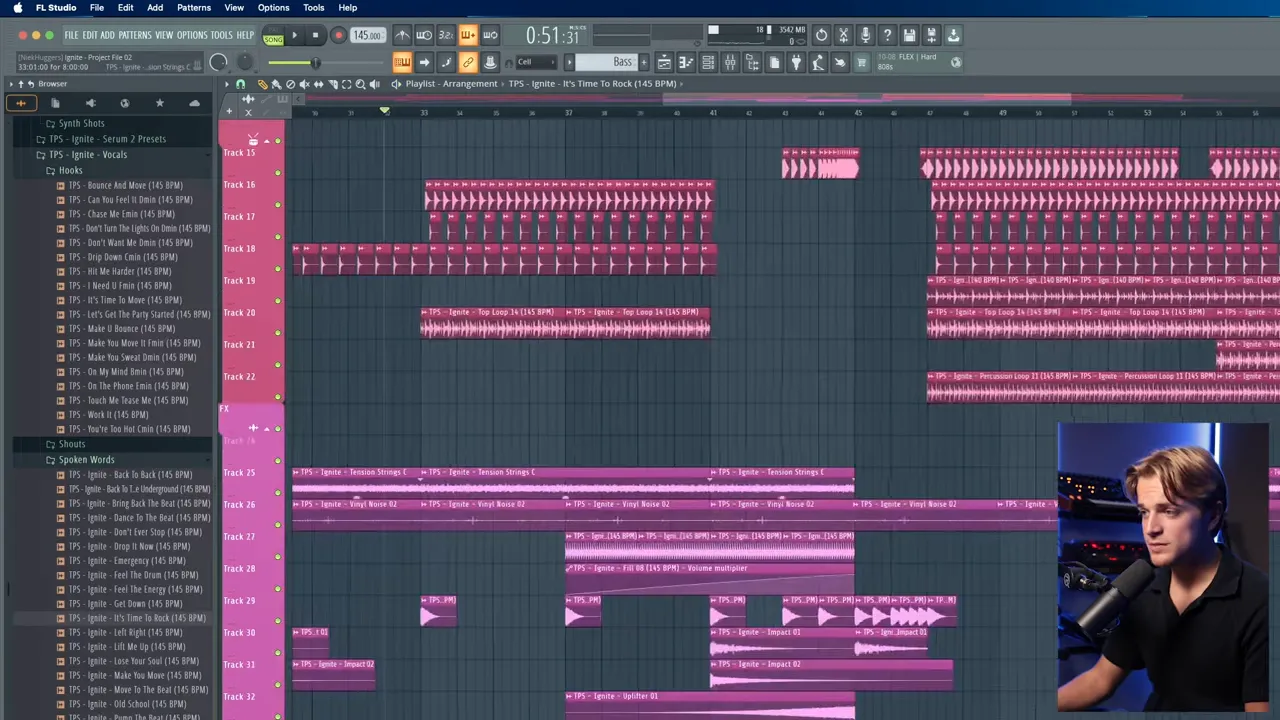
Further learning paths include exploring plugin reviews and production business case studies to refine both sound and strategy. For example, see the Ramzoid 808 Cooker review for bass-specific processing insight (https://howtomakebeatsblog.com/ramzoid-808-cooker-plugin-review/), and the Cymatics sales case study for commercial strategy tips (https://howtomakebeatsblog.com/how-cymatic-made-364000-last-month-being-full-time-producers/).
Finally, practise consistently and listen critically. To Make Beats Like Malugi, recreate small sections, study how the elements interact at different volumes, and iterate until the combination of piano, bass, organ and lead creates that unmistakable smile-inducing rush on the dance floor.
Suggested next steps
- Download a pack of M1-style piano presets and an FM rave lead preset set.
- Set a project to 145 BPM and design a short 16-bar loop using the steps above.
- Export stems and test on club monitors or headphones to evaluate low-end clarity and drop impact.
- Share snippets on social platforms and gather feedback before finalising the track.

